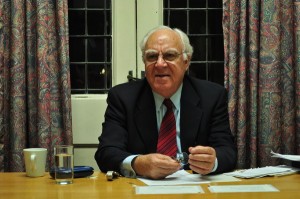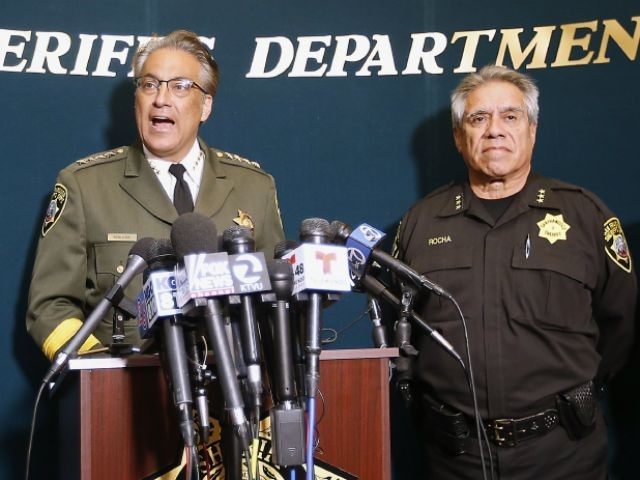California Gov. Jerry Brown wants over three billion dollars in new taxes, including a $65 tax on every vehicle, plus increases in gasoline and diesel excise taxes. The money will go to paying for transportation needs that he ignored in his recent budget.
Once again, Brown has decided that the 42 Republican legislators in the State Capitol are chumps.
This week, Brown’s office circulated his latest proposal to fund transportation infrastructure–after both the State Senate and State Assembly Republican Caucuses have been unequivocal that raising taxes on Californians is off of the table.
Within hours of the release of the Governor’s wish-list for legal plunder, Assembly Republican Leader Kristin Olsen (R-Modesto) released a statement saying that “the Administration’s ideas call for more than doubling the vehicle registration fees and raising the price of fuel on all Californians–we disagree and think Californians have paid enough.”
State Senate Republican Leader Jean Fuller (R-Bakersfield) issued a joint release with Senator Jim Nielsen (R-Gerber), Vice Chairman of the Budget Committee, in which Nielsen spoke to the proposed taxes:
The Governor’s solution to fixing our roads and highways cannot be to raise taxes. We are already paying enough. What are they doing with the taxes Californians have been paying at the pumps? Most Californians drive over 10,000 miles each year; an increase of six cents per gallon for gas, eleven cents per gallon for diesel and paying an additional $65 in car taxes per vehicle is an enormous burden on California’s working families least able to pay them.
Apparently Governor Brown thinks that Republicans are “posturing,” and not serious about drawing a line in the sand against higher taxes.
The Governor wants Republican legislators to forget that it was just two-and-a-half months ago that he signed the largest budget in state history, coming in at nearly $160 billion dollars. This partisan budget was negotiated between Brown and Democrat leaders, without any meaningful input taken from Republicans. Since a budget requires only a simple majority vote, no Republican votes were needed.
Despite billions of dollars in unanticipated tax revenues, and rosy forecasts for the year, the new budget “shorted” needed transportation funding. This was done with premeditation on the Governor’s part, given that as soon as he signed the budget, he then called for a special session of the legislature to raise taxes to fill the politically manufactured transportation funding deficit.
Clearly, again, Brown’s thinking is that Republican legislators are just lacking in intelligence, at even a basic level.
Republicans spent the 2013-2014 legislative term in the super-minority in the Capitol. They had very, very little power. What little leverage they did have was only due to serial corruption by Democrats in the State Senate, with three of them not voting for much of the term (one of the three was convicted on multiple felonies, the other two await trial, but have since termed out).
The 2014 campaign by Republicans to climb out of the super-minority, and regain relevance in the State Capitol, was largely centered around an explicit theme that if the GOP could pick up seats, they could stop tax increases from being passed in the legislature. Perhaps if they were taking a shot at being the majority party in the Capitol, there would have been a more robust and broad campaign theme. But climbing back to over a third in each caucus was about being able to mount an effective defense: no new taxes.
Right now is when Republican legislators are showing their worth, and demonstrating their resolve. This is the moment when they are showing countless volunteers, donors and supporters that elections do matter, and that united together Republicans can protect California taxpayers.
Ironically, the Governor’s ongoing insistence that taxes be hiked by billions of dollars gives Republican legislators a chance to demonstrate that they have the courage of their convictions.
The sad reality is that this kind of high-stakes kabuki with Republicans has a tremendous downside for the State of California, which is that despite the fact that taxpayers are sending record funds to state government, Democrats simply won’t spend any of that money on the basic brick-and-mortar building of roads.
If the Governor was truly interested in making California a better place, instead of abusing Republicans, he should actually listen to them. While some solid Republican ideas were incorporated into the Governor’s latest proposals, largely rejected were a lot of great and creative proposals put forward by the GOP caucuses to fund transportation infrastructure using existing tax revenues.
Maybe, just maybe, if Capitol Democrats will absorb the fact that car taxes, gas taxes, income taxes, property taxes, tobacco taxes, and oil severance taxes (to name a few of those proposed) are not going to happen, the last week of the legislative session could be used productively to prioritize some existing revenue for roads, highways and bridges.
____
Jon Fleischman is the Politics Editor of Breitbart California. A longtime participant, observer and chronicler of California politics, Jon is also the publisher atwww.flashreport.org. His column appears weekly on this page. You can reach Jon at jon@flashreport.org.





